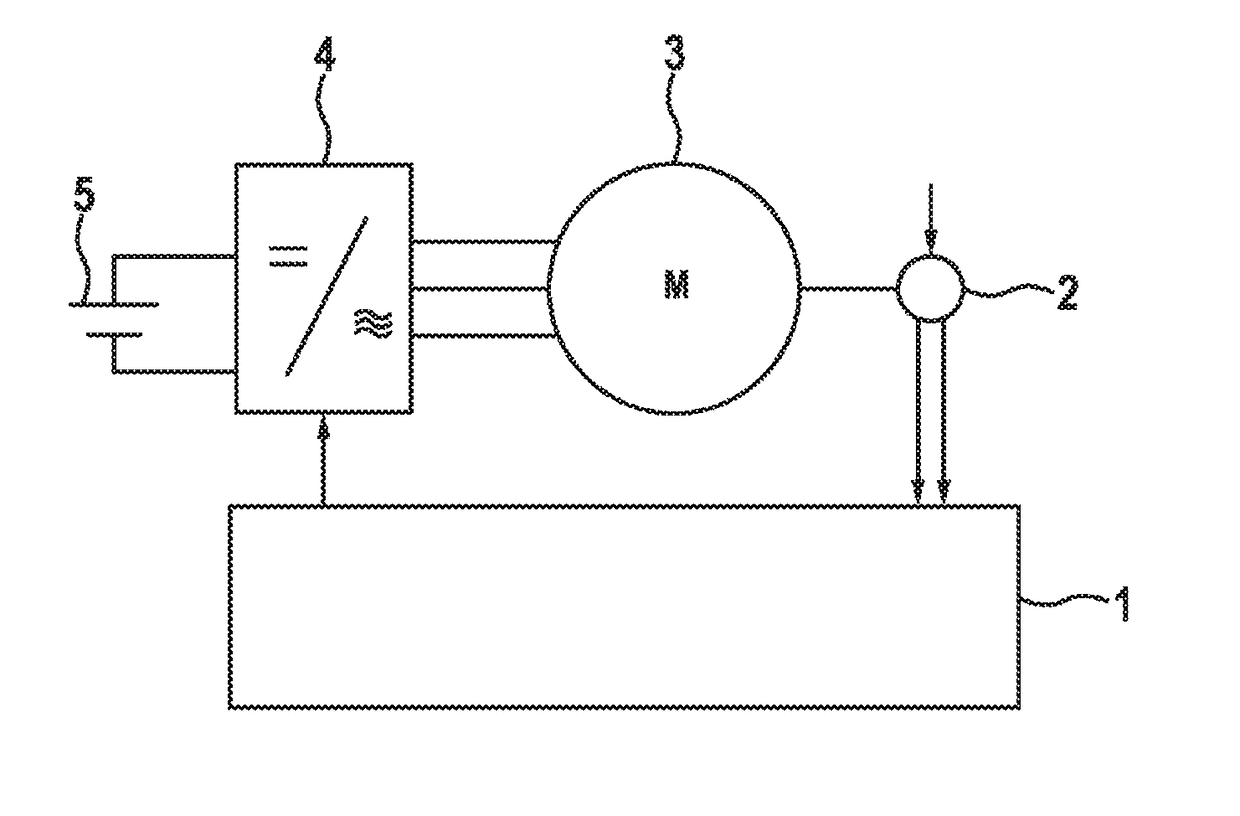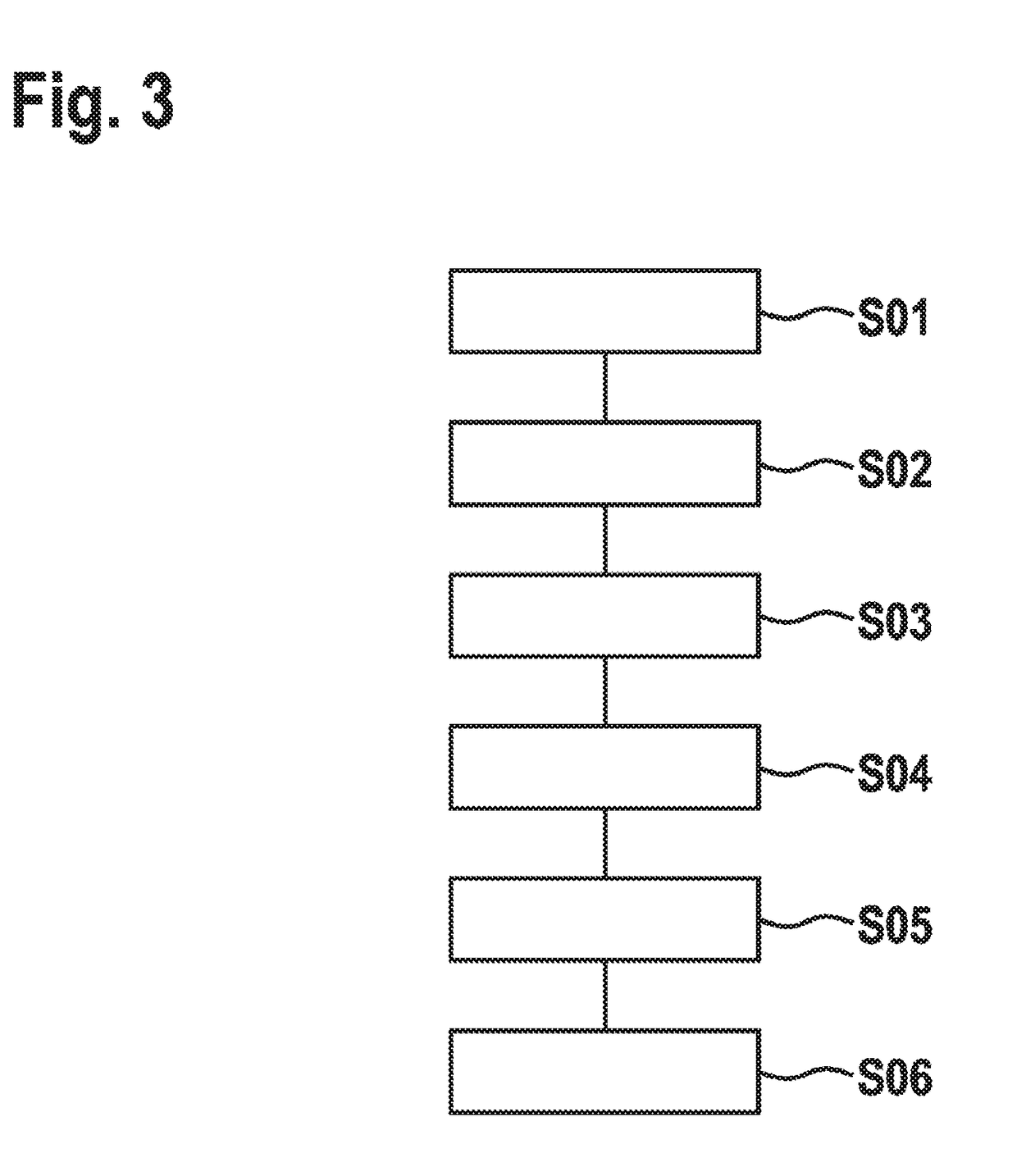Device and method for testing the plausibility of signals of a rotary encoder
a technology of rotary encoder and plausibility test, which is applied in the direction of measurement devices, instruments, sensor output conversion, etc., can solve problems such as errors in the calculation of angle of rotation, and achieve the effect of testing the plausibility of amplitude differences particularly quickly and with little technical complexity
- Summary
- Abstract
- Description
- Claims
- Application Information
AI Technical Summary
Benefits of technology
Problems solved by technology
Method used
Image
Examples
Embodiment Construction
[0026]FIG. 1 shows a schematic block diagram of an electrical drive system according to one embodiment. An electric machine 3 is fed by an electrical power source 5 via a rectifier 4. For example, the electrical power source 5 may be a traction battery of an electric vehicle. The electric machine 3 may, for example, be a permanently excited synchronous machine, an electrically excited synchronous machine, or an asynchronous machine. In addition, other electric machines are also generally possible. The embodiment depicted here of a three-phase electric machine 3 constitutes only one exemplary embodiment. In addition, electric machines having a number of phases differing from three are also possible. The rectifier 4 converts the electrical power provided by the electrical power source 5 and provides the converted electrical power for controlling the electric machine 3. The control of the electric machine 3 may be carried out based on specifications or control signals from a control de...
PUM
 Login to View More
Login to View More Abstract
Description
Claims
Application Information
 Login to View More
Login to View More - R&D
- Intellectual Property
- Life Sciences
- Materials
- Tech Scout
- Unparalleled Data Quality
- Higher Quality Content
- 60% Fewer Hallucinations
Browse by: Latest US Patents, China's latest patents, Technical Efficacy Thesaurus, Application Domain, Technology Topic, Popular Technical Reports.
© 2025 PatSnap. All rights reserved.Legal|Privacy policy|Modern Slavery Act Transparency Statement|Sitemap|About US| Contact US: help@patsnap.com



